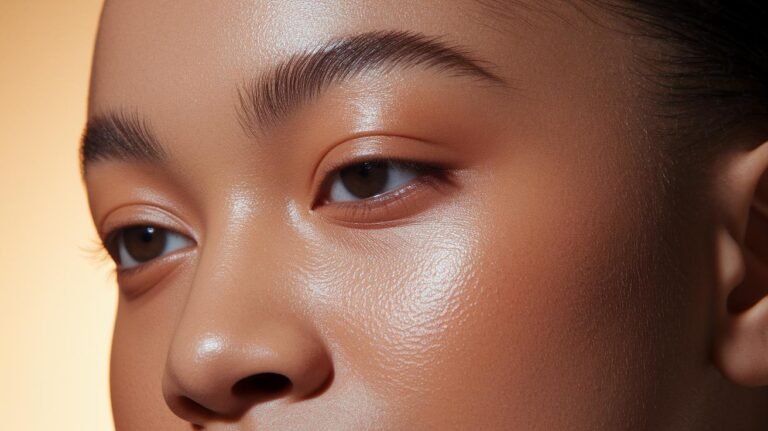Dealing with bumpy skin can feel like an uphill battle, especially when it seems like nothing you try makes a difference. Whether you’re struggling with keratosis pilaris (those tiny bumps on the backs of your arms), hormonal acne, or other textural issues, creating a consistent skincare routine specifically for your bumpy skin can make a world of difference. The key is knowing which products to use, in what order, and being patient with the process. The good news? With the right approach, smoother skin isn’t just a dream – it’s absolutely achievable.
Understanding Bumpy Skin: The First Step to Smoother Skin
Before jumping into a new skincare routine, it’s important to understand what’s causing your bumps in the first place. Bumpy skin can result from several conditions:
Your approach might vary slightly depending on your specific condition, but the following seven steps provide a solid foundation for most types of bumpy skin concerns.
Step 1: Gentle Cleansing Is Your Foundation
The cornerstone of any skincare routine for bumpy texture starts with proper cleansing. Harsh soaps can strip your skin of natural oils, potentially making bumps worse by triggering overproduction of sebum.
Look for sulfate-free cleansers with ingredients like glycerin that clean without compromising your skin barrier. If you’re dealing with body bumps, try cleansers containing salicylic acid a few times weekly – this beta hydroxy acid (BHA) can penetrate oil and help clear clogged pores from within.
Remember to use lukewarm water rather than hot water, which can further irritate and dry out bumpy skin. Pat your skin dry instead of rubbing, which can cause additional irritation.
Step 2: Exfoliate Strategically, Not Aggressively
Exfoliation is crucial for bumpy skin, but the method matters tremendously. Physical scrubs can actually worsen bumpy texture by causing micro-tears and inflammation. Instead, chemical exfoliants are your best friends.
For Face:
Look for products with AHAs (glycolic or lactic acid) or BHAs (salicylic acid). Start with lower concentrations (2-5%) and gradually increase as your skin builds tolerance. Use 2-3 times weekly, not daily.
For Body:
Body lotions or washes with 10% AHAs like glycolic acid or ammonium lactate work wonders for keratosis pilaris and general roughness. Products containing urea can also help break down the excess keratin that causes those stubborn bumps.
Step 3: Hydrate with Non-Comedogenic Moisturizers
A common misconception is that oily or bumpy skin doesn’t need moisturizing. Nothing could be further from the truth! Dehydrated skin often produces more oil to compensate, potentially worsening bumps.
Choose lightweight, non-comedogenic moisturizers that won’t clog pores. Ingredients to look for include:
For body bumps, thicker creams containing lactic acid can both moisturize and gently exfoliate simultaneously.
Step 4: Incorporate Active Ingredients Strategically
Beyond your basic routine, certain actives can dramatically improve bumpy texture when used correctly:
The key here is patience and consistency. These ingredients take time to work – typically 8-12 weeks before seeing significant improvement. Also, introduce just one new active at a time, spacing them out by at least two weeks to avoid irritation.
Step 5: Never Skip Sun Protection
Sunscreen is non-negotiable, especially when treating bumpy skin. Many treatments increase photosensitivity, and sun exposure can worsen hyperpigmentation that often accompanies texture issues.
Look for oil-free, broad-spectrum SPF 30+ formulas labeled “non-comedogenic.” Mineral sunscreens containing zinc oxide often work well for sensitive, bump-prone skin, providing added anti-inflammatory benefits.
Apply liberally every morning as your final skincare step, and reapply throughout the day when outdoors.
Step 6: Practice Smart Lifestyle Habits
Your skincare routine doesn’t exist in isolation. Several habits directly impact skin texture:
Many people notice significant improvements in their skin by simply addressing these external factors, even without changing their product lineup.
Step 7: Be Patient and Consistent
Perhaps the most challenging yet crucial step is giving your routine enough time to work. Skin cells typically turn over every 28 days, meaning you need at least one full cycle to begin seeing results.
Take progress photos under the same lighting conditions every few weeks. Sometimes improvements happen so gradually that you might not notice them day-to-day, but comparing photos can reveal significant changes.
Resist the urge to constantly switch products or add multiple new treatments simultaneously. Simplicity and consistency often yield better results than complicated routines with too many active ingredients competing for attention.
When to See a Dermatologist
If you’ve given your bumpy skin routine a fair chance (at least 8-12 weeks) without improvement, or if your bumps are painful, inflamed, or spreading rapidly, it’s time to consult a dermatologist. They can prescribe stronger treatments like prescription-strength retinoids, antibiotics, or specialized procedures that might be necessary for more stubborn cases.
Remember that everyone’s skin is different, and what works beautifully for one person might not work for you. Don’t get discouraged – sometimes finding the right approach requires some trial and error, but smoother skin is absolutely within reach with the right skin care routine for bumpy skin.







